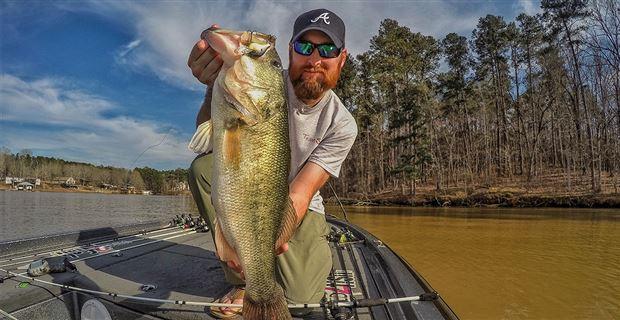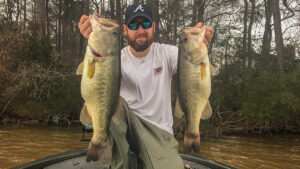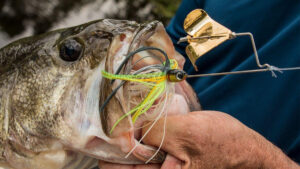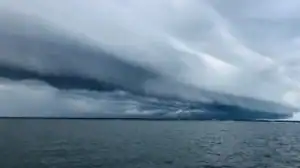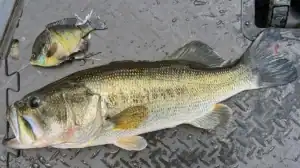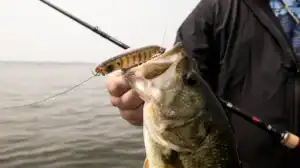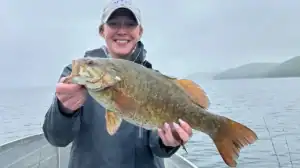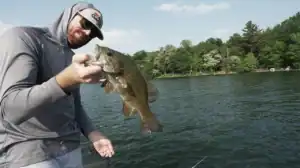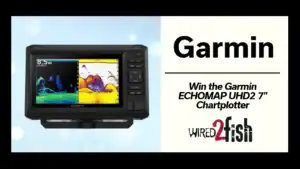There are a lot of bass fishing theories many of us trust without ever questioning. Case in point: Suspended bass in dirty water. We’ve been made to believe these fish aren’t catchable, so we’re constantly running from them in search of cleaner water and more suitable conditions.
My local reservoirs have been inundated with muddy water this season and initially, I was having a heck of a time getting bit fishing bottom-contact baits. For whatever reason—I’m not going to pretend to be a biologist—big bass tend to suspend when they’re hit with fresh, muddy water. Every fish I’d see on my Lowrance was suspended off the ends of points, on the fronts of docks and even on offshore humps.
I’ve spent a lot of time targeting these fish and experimenting with certain presentations. It has taught me that suspended, muddy-water bass are, indeed, possible to catch.
Crankbaits
Bottom contact is hardwired into our brains when we’re crankbait fishing; we want that sucker bouncing and deflecting off of every piece of cover we can find. In this particular situation, however, I’ve had a lot of success without my plug coming anywhere close to the bottom.
The key ingredient to this approach is bait. Idle around high-percentage areas such as primary points, secondary points and any current (wind or natural) breaks and keep an eye out for any pods of bait.
I’ve been using crankbaits that dive to the depth at which the bottom of the bait ball is situated. For instance, if it extends from 8 feet to 15 feet, choose a crankbait that dives to the 15-foot depth range.
Retrieve speed is important as well. Remember, these fish are in a little bit of a funk; that’s why they’re suspended. While traditional knowledge would often dictate a slow, steady retrieve for inactive bass, a quick retrieve is often most productive. These fish aren’t always feeding heavily, so if you can trigger their predatory instincts with a fast, erratic retrieve, you can often make them bite out of pure reaction. I’ve actually been using a 7.1:1 gear ratio reel for this technique, although I usually crank with a 6.4:1 gear ratio.
If the fish are there, they’ll likely show themselves within a dozen or so casts. If I’m snagging bait—shad, darters or whatever else—I’ll stay in the area a bit longer. When you catch a bass, it’s important to unhook and release the fish quickly and keep casting. These small schools won’t stay fired for too long, so keeping a bait in front of them is paramount.
Bladed jigs
When we talk suspended bass, don’t think they’re all located in deep water. It’s not at all uncommon for shallow-water bass to be suspended on, for example, a dock post. The post may be sitting in 6 feet of water and the bass will be situated in 3 feet.
Bladed jigs excel around any type of shallow cover—especially docks and vegetation—when dirty-water bass are suspended. Bass “feed up”, meaning that it’s important to keep your lure at or above their depth level; very rarely will they swim down to attack your offering.
This type of depth control is a major advantage of a bladed swim jig. Based on your rod positioning and retrieve speed, you’re able to present the lure at any depth range. I’ve caught a lot of fish in this situation by simply “bulging” my Chatterbait underneath the surface. I’ll keep a high rod tip and create a wake when targeting shallow cover.
It’s good practice to use some sort of soft-plastic trailer in dirty water. Bass are relying heavily on vibration transmitted from their lateral lines for feeding and the added bulk of a trailer will increase water displacement. A small swimbait or even a crawfish-imitation soft plastic will suffice.
Because you’re keeping your bladed jig above the fish and high in the water column, you’ll see most of your strikes. Don’t hesitate on the hookset like you’d do with a topwater frog; lay the wood to ‘em when you see the boil. Remember, you’re going to be close to heavy cover, so it’s important to get the fish pinned and coming to the boat quickly.
Buzzbaits
Crankbaits and bladed jigs will catch a lot of bass and provide plenty of fun once you’re able to establish a pattern based on the aforementioned recommendations. But buzzbaits are a big fish technique when you’re faced with fresh, muddy water. You may only get four or five bites per day, but they’ll be the right ones.
As we discussed, you’re trying to stay above the bass; they’re looking upward for feeding opportunities. A buzzbait allows you to do just that, as well as create a lot of commotion for bass that might not be able to see well in the low-visibility conditions. As long as the water temperatures are hovering around the 55-degree range, this is an excellent choice.
This technique boils down to covering water quickly and efficiently. I wish I could tell you exactly where to catch a big buzzbait bass, but due to different weather conditions and environmental factors, I can’t. Instead, keep your trolling motor on “high” and cast to any shallow cover until you get a bite. Once you get a bite, you’ll be able to duplicate that pattern throughout the area.
Crucial questions to ask yourself when you get a bite are: Was she on hard (wood, rock) or soft (vegetation) cover? How fast was I reeling? Was she close to the mouth of a pocket? Was she in the back of a pocket with fresh runoff coming in?
If you’re able to assess those factors, it’s very likely you’ll be able to establish a big fish pattern throughout the day.
There are other baits that will work when targeting suspended bass in muddy water; but these particular presentations have produced especially well for me as of late. Try them out the next time you’re faced with these conditions and I think you’ll enjoy some great fish catches.
